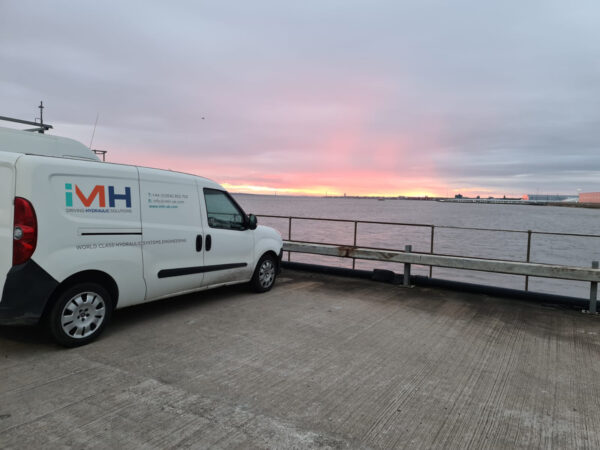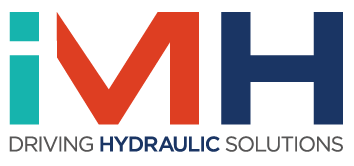- Client:
- Humber Work Boats and ABP
- Date:
- October 2022
- Scope of work:
- Removal and installation of two cylinders and service hydraulic power unit
- Location:
- Humber Sea Terminal, Hull
- Specs:
To replace two cylinders, approximately 20m in length and weighing around 10 tonnes
Service HPU including reservoir draining and inspection and inspection of all components and filter elements and upgraded the system to an online pump
Pre-cleaned fluid to ISO 17/15/12 or better
Conducted factory acceptance testing
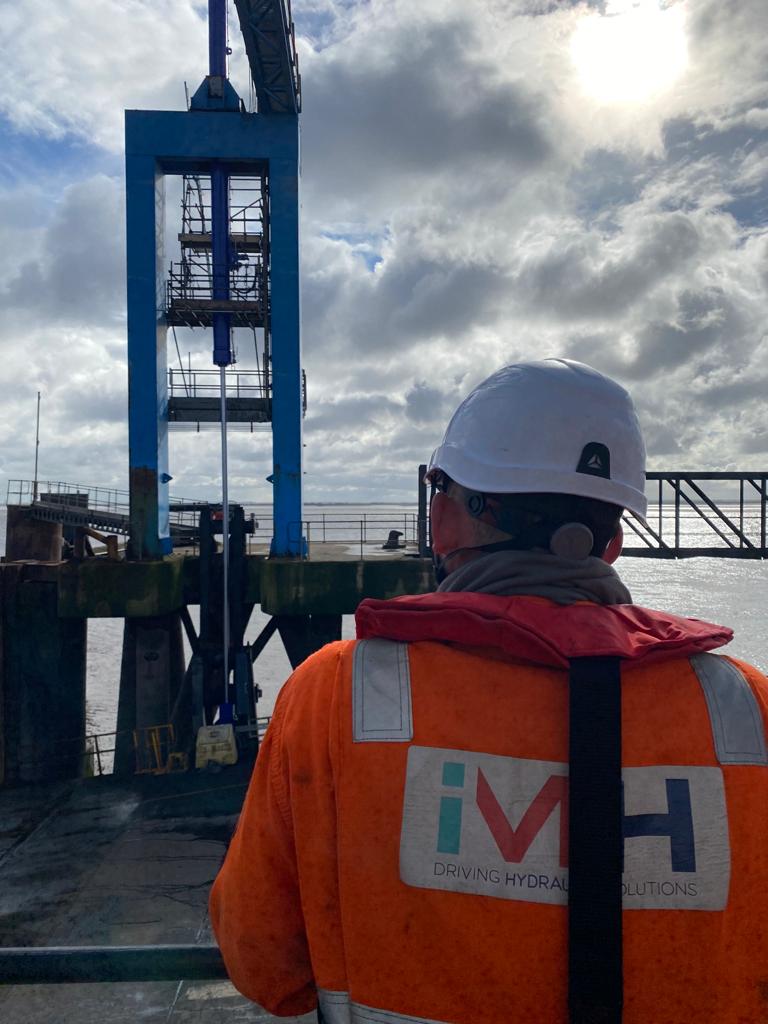
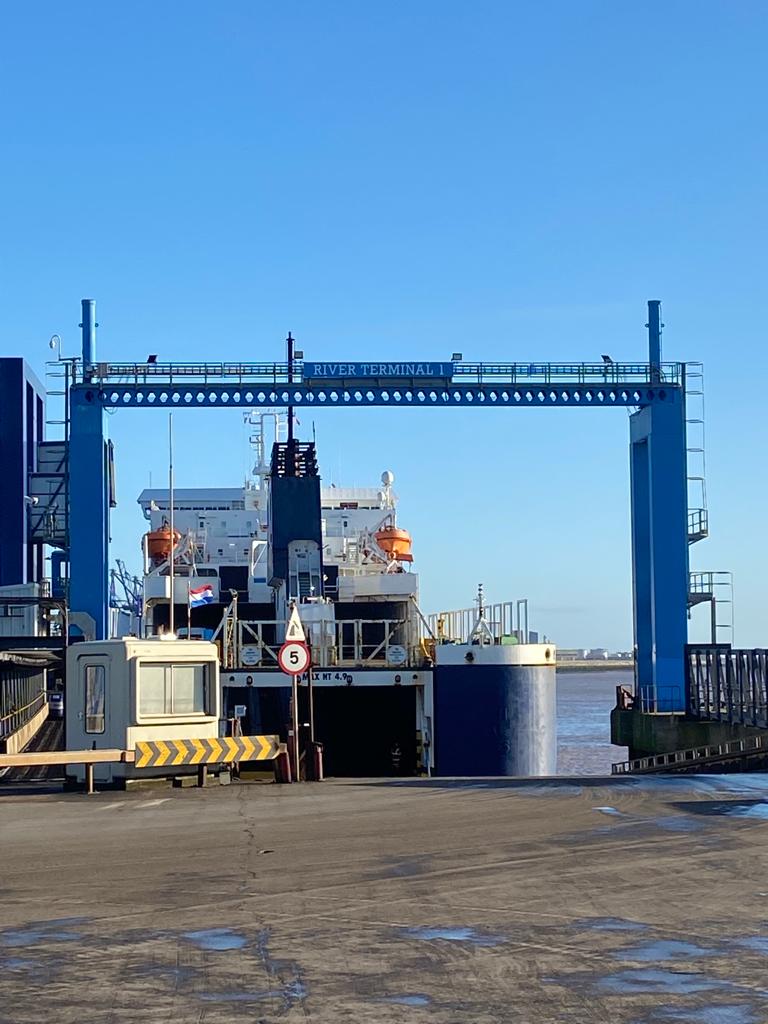
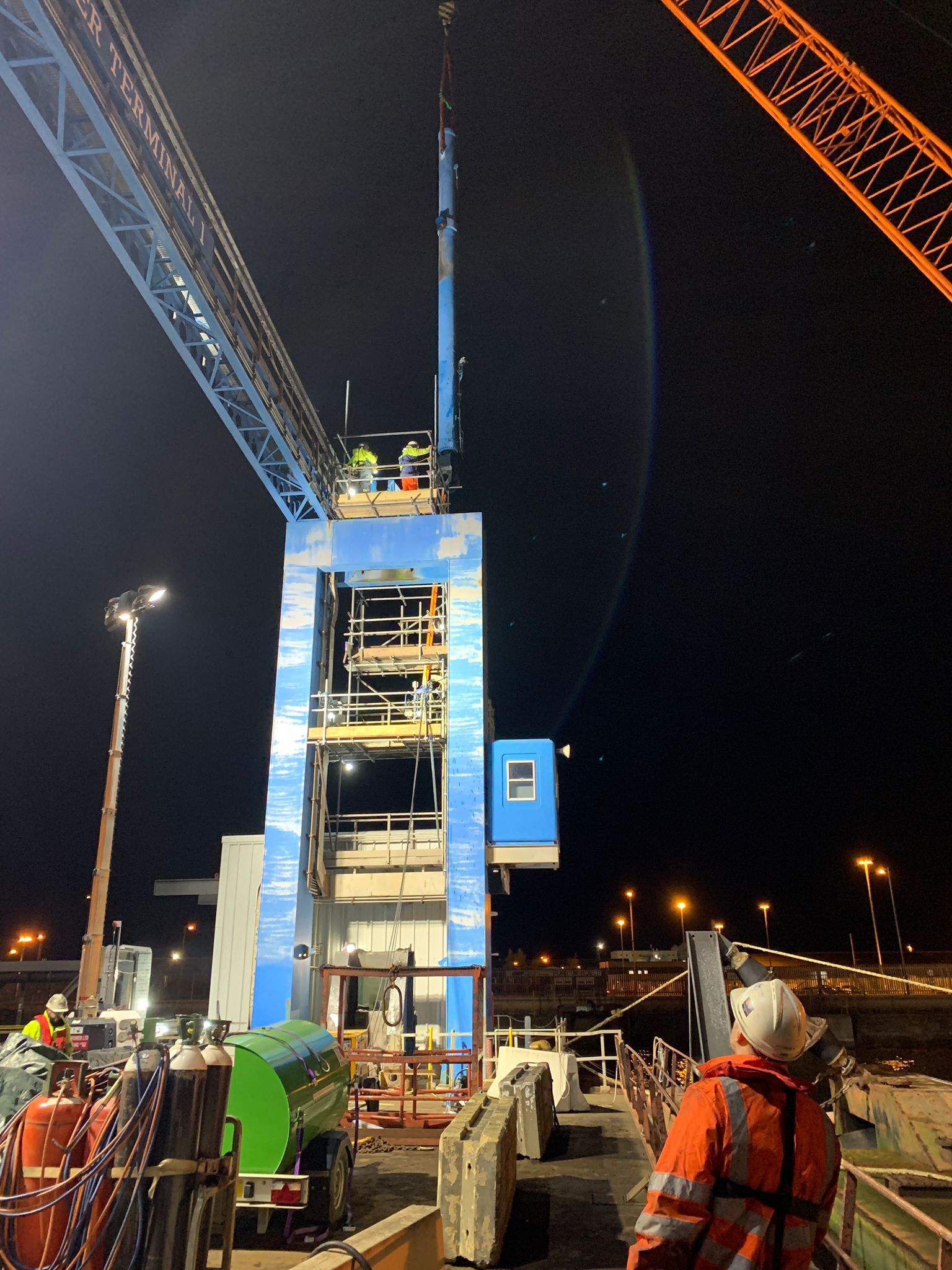
HUMBER SEA TERMINAL – LINKSPAN
- Overview:
IMH has a long-established history of working on linkspans and with ABP, who commissioned IMH to work on the lock gates at Humber Sea Terminal.
As part of the planned maintenance, it was agreed that the cylinders powering the linkspan needed to be replaced. However, the project would need to be completed in tight timescales in order to avoid the major costs and logistical implications incurred if the terminal was not able to operate.
Prior to the commencement of the project and to ensure it ran smoothly, IMH engineers attended a number of pre-planning assessments at the Humber Sea Terminal, North Killingholme.
Scope of work:
The work was scheduled to take place between a ferry leaving the terminal on a Tuesday and a ferry arriving on a Friday morning. To ensure that no precious time was wasted, IMH’s core project team were on site from Monday to check that all of the required equipment was available and ready to go.
As part of the project, IMH removed and drained the existing cylinders into IBCs before working with Humber Work Boats to install and commission two new cylinders. Owing to the age of the cylinders being removed and the expected degradation of parts, IMH conducted preparation works to enable the removal of the cylinders and pins with more ease.
Each new cylinder is around 20m fully extended, operating at 450 bar and weighs around 10 tonnes.
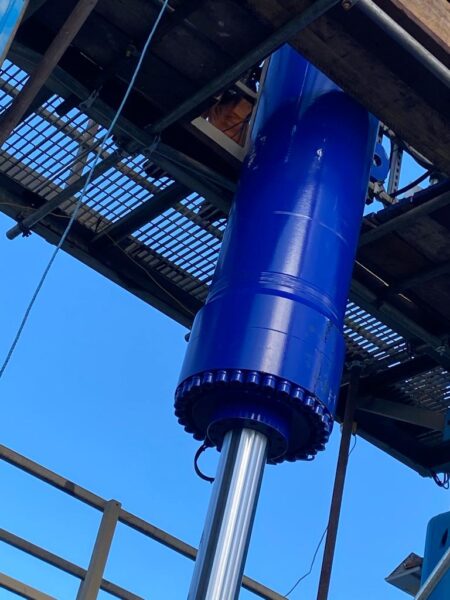
Working around the clock, the IMH project team worked efficiently to complete the full scope of the project on time. Although there were challenges associated with the age of the system, IMH’s experience and the upfront months of planning and inspection meant that there were no unmanaged issues on site.
After commissioning, IMH stayed for the first ferry load and unload, to be on hand if there were any issues and to sign off the work.
During the main works, IMH, in parallel to replacing the cylinders, completed work on the linkspan’s hydraulic system. The reservoir was drained into IBCs for disposal of the old hydraulic fluid in line with IMH’s waste management procedures.
The Hydraulic Power Unit was then serviced including a full clean of the HPU internally and externally. As part of this process the inspection hatches were removed to ensure that the reservoir was free of contamination.
For system reliability, IMH pre-cleaned the new fluid to a cleanliness of 17/15/12, this was achieved using its mobile filter trolley unit. The purpose of new fluid, rather than recycling, was due to the extremely limited time the hydraulic system could be offline, it would be quicker to bring the new oil to the required ISO standard, rather than clean the existing oil.
To further reduce the likelihood of a potential breakdown, IMH also replaced the hydraulic hoses as their condition had been degraded due to their exposure to UV light, marine conditions and the age of the system.
IMH inspected all components and carried out a flow test on the pumps to ensure their efficiency.
All filter elements were removed and inspected for defects, which could indicate signs of electrostatic discharge for example, but no issues were detected. The filter bowls were then cleaned before new filter elements were installed.
In addition, IMH installed two new flow turbines and isolation valves to allow the customer to carry out pump efficiency testing. This also means that the client can monitor for issues – which can help to avoid unexpected and costly downtime.
On completion of the service the hydraulic system was commissioned to ensure it was free of leaks.
Explore our case studies for more project examples of our capabilities and contact us to discuss your requirements.
Follow us on LinkedIn and sign up to our newsletters to be kept up to date on this project and others.
